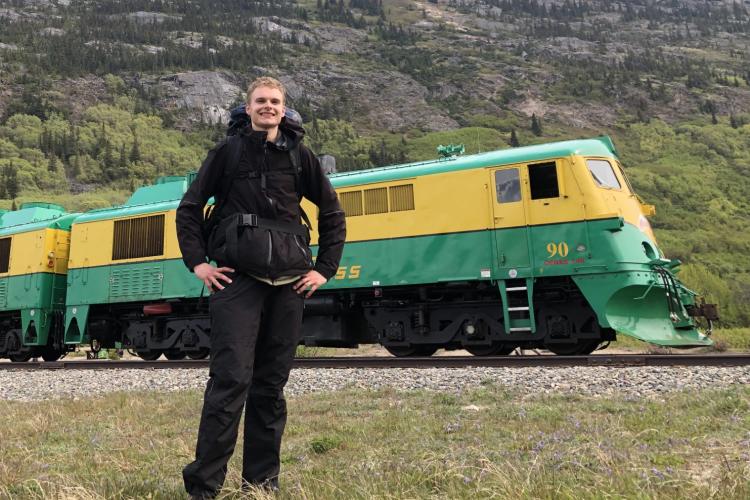Breadcrumbs
When the lake is too low to boat: researchers board the train to Bennett Lake

This June, low water levels in Bennett Lake disrupted the travel plans of Yukon University research assistants, Leif Rupke and Christina MacNeil, and lead researcher, Dr. Ashley Dubnick. Instead of accessing a remote research site by boat with Land Guardians from the Carcross Tagish First Nation – which is how researchers typically travel to the site – the team blew their whistles and boarded the White Pass & Yukon Route Railway.
The train, commonly enjoyed by tourists, became a critical part of the team’s travels. MacNeil, a fourth-year Environmental Science student in YukonU’s partnership program with the University of Alberta, explains, “the train was the only viable option. The boat didn't pan out because the water levels were really low.”
The trip was part of a collaborative research program with local partners, designed to address priorities in the headwaters of the Yukon River including Atlin, Tagish, and Bennett Lakes. The project includes collecting water quality and hydrology data from the headwaters of these larger water bodies. Such data has been historically lacking, limiting our understanding of environmental change, watershed processes, and ecosystem functions.
“It’s useful to get an idea of baseline water quality data,” says Rupke, who studies at the University of Ottawa and works with YukonU’s Climate Change Research team. “You can’t quantify change over time without baseline values.”
The field day included a 40-minute train ride from Fraser, B.C. to Bennett Lake, followed by a cross-river trek, and a run-in with an angry group of arctic terns. Lindeman river required the use of paddleboards to float across gear and even researchers. “They transported me like the Queen of Sheba,” laughs MacNeil, recalling a lake crossing too deep to wade.
Despite the logistical challenges, and an encounter with bear tracks, the team successfully installed sensors and collected water samples. The data will help track everything from contaminants and nutrients to glacial influence and water levels.
The team expects to return sometime in the fall to collect the sensors – perhaps by train once again.